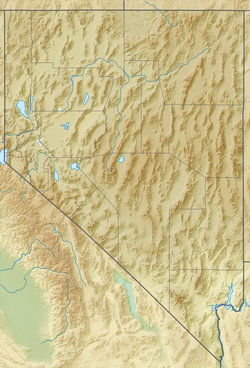| Mahogany Hills | |
|---|---|
| Highest point | |
| Elevation | 2,346 m (7,697 ft) |
| Geography | |
| Country | United States |
| State | Nevada |
| District | Eureka County |
| Range coordinates | 39°26′14.743″N116°9′18.226″W / 39.43742861°N 116.15506278°W |
| Topo map | USGS Combs Peak |
The Mahogany Hills are a mountain range in Eureka County, Nevada. [1]
